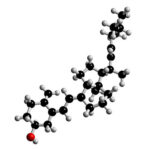 The Endocrine Society has published guidelines.
The Endocrine Society has published guidelines.
First, the details.
- The Task Force was composed of a Chair, 6 additional experts, and a methodologist.
- Consensus was guided by systematic reviews of evidence and discussions during several conference calls and e-mail communications.
And, the results.
- Vitamin D deficiency is common in all age groups, and few foods contain vitamin D.
- Suggested daily intake and tolerable upper limits depend on age and clinical circumstances.
- Measuring 25-hydroxyvitamin D levels using a reliable assay is the initial diagnostic test for patients at risk for deficiency.
- There is insufficient evidence to recommend screening people who are not at risk for deficiency or to prescribe vitamin D to attain the normal calcium levels for cardiovascular protection.
- Tolerable upper limits of vitamin D, which “should not be exceeded without medical supervision,” include:
- 1000 IU/day: Infants aged up to 6 months
- 1500 IU/day: Infants aged 6 months to 1 year old
- 2500 IU/day: Children aged 1 to 3 years
- 3000 IU/day; Children aged 4 to 8 years
- 4000 IU/day: Everyone older than 8 years
The bottom line?
Medscape has a detailed summary of the recommendations, here.
6/9/11 20:83 JR